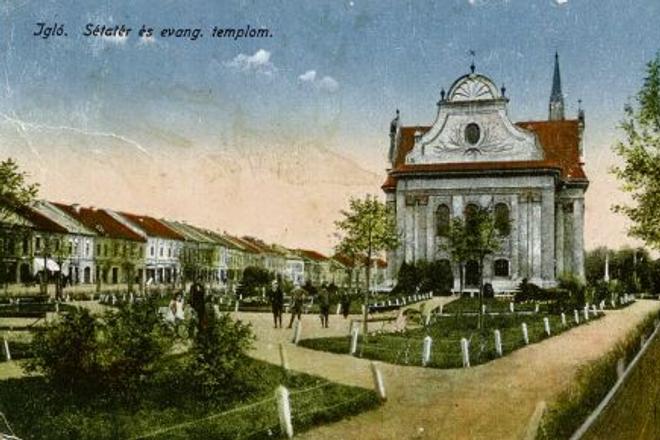THE SPIŠ region in north-eastern Slovakia contained, along with Bratislava and the Hauerland region in central Slovakia, one of the biggest German settlements on the territory. Germans inhabited mainly towns, as opposed to rural areas, and Spišská Nová Ves was no exception.
In this romantic, colourised early 20th-century postcard, one can see the town centre, with an evangelical church dating back to the 1790s. However, a wooden chapel also once stood there, commemorating the arrival of Martin Luther’s Protestant Reformation to Slovak territory. Luther’s movement asserted itself quickly in Spiš, as the Germans living there maintained close ties to their homeland, and some even knew Luther and his collaborator, Philipp Melanchthon, personally.
German settlers influenced life in Spiš even earlier, however. German bellfounder Konrád Gaal was invited to Spiš by King Ľudovít I to craft and hang a big bell for a church in Visegrad, in today’s Hungary. Gaal succeeded and won many privileges for his work: he was elevated to the nobility and was allowed to settle wherever he pleased. Moreover, his home would be exempt from taxes and other fees. That Gaal wound up in Spišská Nová Ves (then called Iglo) was no coincidence, as the bellfounder chose what was by that time already a well-established German environment, but also a place with an abundance of copper and wood - resources necessary for bell production.
Moreover, at that time Spiš was undergoing a construction boom. The first written mention of Konrád Gaal and his bell foundry dates back to 1357. It operated until the 1620s, producing high-quality bells and beautifully decorated baptisteries, and was deemed the best Gothic bell foundry in the country.


